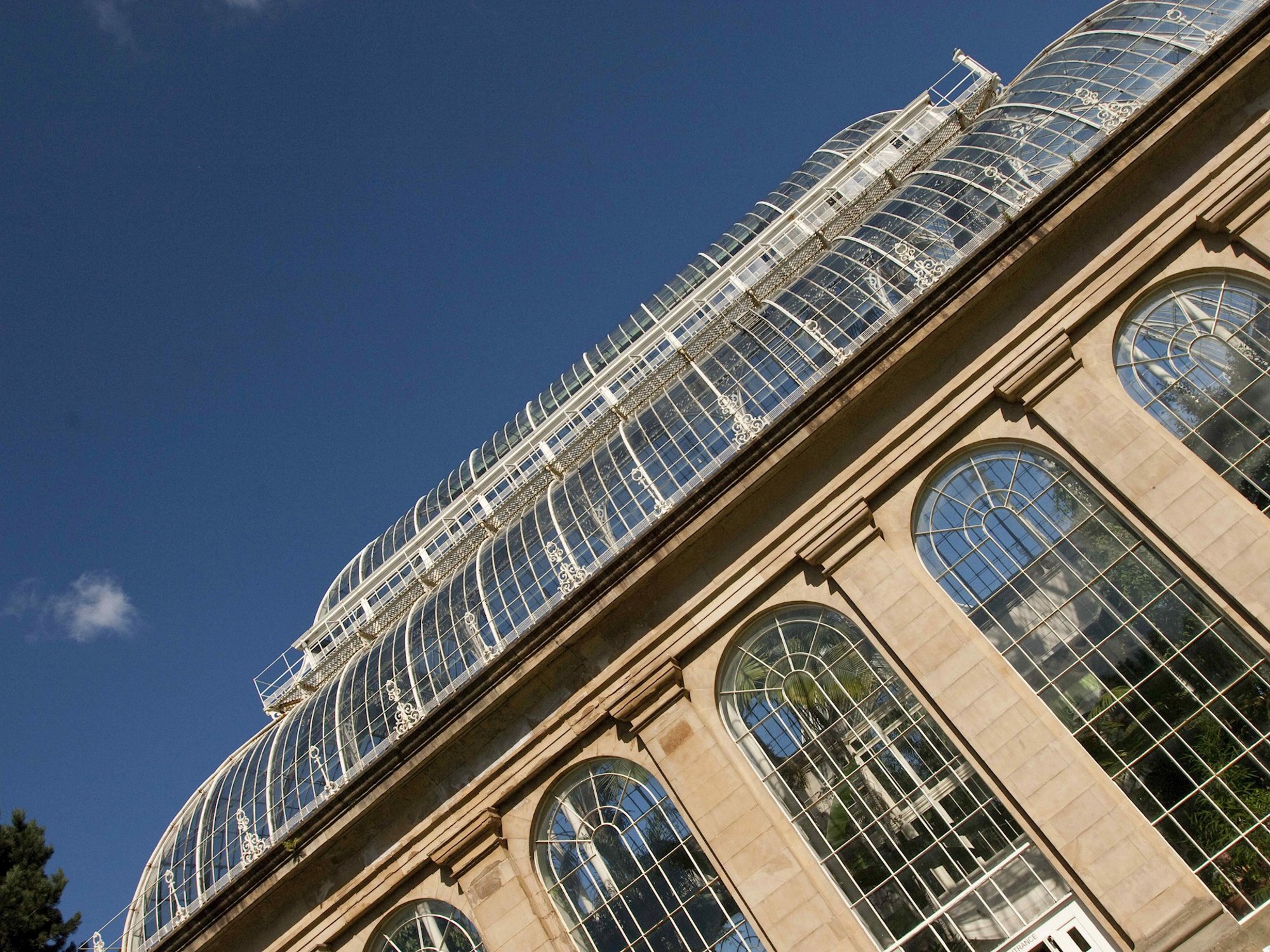As spring bursts forth across the Royal Botanic Garden Edinburgh (RBGE), a new era is also beginning at the Garden’s Palm House, as a long-anticipated restoration of glass, iron and stone gets underway. Formerly divided into separate Temperate and Tropical Palm Houses, the partition has now been removed, reuniting the two buildings for the first time in a generation.
Standing 72 feet (21.9 metres) high and hewn from Scottish sandstone, the iconic Palm House is one of the tallest stone-based glasshouses in the world and the tallest in the UK. A much-loved part of Scotland’s architectural heritage, it is now desperately in need of repair.
Amy Murray, Head of the Edinburgh Biomes programme at RBGE explained: “Our A-listed Palm House is now almost 200 years old and are starting to show their age.
“Working with specialist stonemasons, architectural glazers and conservation architects, we have now embarked on a comprehensive programme to repair, restore or replace every inch of the deteriorating infrastructure.
“Our aim, at the end of this ambitious project, is to restore this magnificent building to its former glory and to once again provide a safe haven for our Living Collection of plants, welcoming visitors to an exciting new experience and helping to protect biodiversity for future generations.”
The complex operation to renovate the historic Palm House began in 2021 with the lift and careful removal for safekeeping of around 800 plants, some of which are endangered in their native habitats.
Once horticultural staff had removed the plants and the house stood empty for the first time in almost 200 years, contractor Balfour Beatty then began a 16-week programme to construct scaffolding which now fills the interior and encases the exterior of the building.
With scaffolding in place, specialist Envirowrap cladding, designed to create a taut, weatherproof seal, is being shrink-wrapped around the structures. Moulding closely to the building, it will protect both artisans and the natural environment as the accumulated paint, rust and grime of centuries is removed.

Image: Envirowrap cladding is added to the front of the Palm House
Simultaneously, the painstaking task of removing 5,750 panes of glass – reaching from the ground to the tip of the glass dome – is underway.
With preparatory work almost complete, the task of restoring around 500m² of crumbling sandstone and over 600m² of structural ironwork – including narrow spiral staircases and vertigo-inducing aerial walkways – is now underway. While some metalwork will be repaired in-situ, the elegant 6.7-metre-high arched windows will be taken off-site, with the aim of renovating rather than replacing the heritage frames.
Finally, the restored ironwork will be painted, glass replaced, and plants reintroduced to a large temperate space, allowing visitors to enjoy the beauty of the architecture against a stunning new design of plantings and interpretation.
The Palm House will reopen towards the end of the Edinburgh Biomes project, scheduled for completion in 2028.
The building will be restored thanks to support from the Scottish Government, National Lottery Heritage Fund, Garfield Weston and other supporters.

